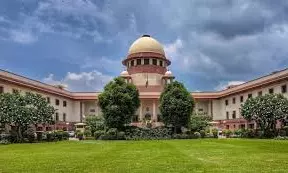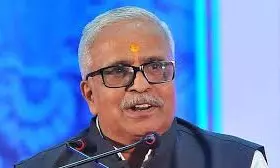What unites India
“Though Shakespeare did not invent the form He wrote a lot of sonnets to a guy Encapsulating both the calm and storm Of love. And though I can in no way try;
Wanton Dedications
Ed
By Bachchoo
My unanswerable question of the week: “What unites India ” It’s not a trick question, simply a tricky one. Though various people have had a stab at it, no one has the answer. The latest stab is a very readable book by James Astill, former Indian bureau chief of the Economist called The Great Tamasha: Cricket, Corruption and the Turbulent Rise of Modern India, though he doesn’t set out to precisely answer my question. There have been other worthy attempts. In a documentary I commissioned, in my then capacity as a TV operative, from Salman Rushdie he said he was perplexed by this disparate continent being one nation. This was before the riots which got the Satanic Verses banned. Salman began the documentary journey, a quest for the non-fictional Midnight’s Children in his ancestral Kashmir and then moved on to Mumbai to feature a Shiv Sena leader of the time called Chhagan Bhujbal. It was clear that Rushdie didn’t have much time for this particular child of midnight though he portrayed him as a child of the darkest hour as the Sena’s attitude towards people from outside Maharashtra didn’t meet with his approval. My question has been asked variously before and answered in several ways. Historians have doubted the organic “unity” of India, some characterising it as merely a political unity brought about by successive conquests and territorial integration. The penultimate one of these was the political unification of everything continental south of the Himalayas by British colonialism. One can’t really dispute the fact that their colonial rule, extended in all but name to the princely states that existed through their indulgence, was the foundation of the modern Indian states of India, Pakistan and Bangladesh — which may have been one had they not been divided by undead fissiparities. Though I was, as the commissioner of Rushdie’s documentary quest, entitled to ask Rushdie whether he meant that India’s multiplicity of religions couldn’t make a nation, I didn’t. I presumed that his unease about India’s unity went deeper than the contention that a Hindu majority wouldn’t live at peace with a Muslim minority. That point of view, propagated in a regenerate form through the idea that “Hindutva” is India’s gravitational integer, had already done its mischief in the tragedy of Partition. Rushdie was certainly no apostle of anything approaching such simplicity. My question is one that ought to be asked constantly. India lives under a Constitution whose stipulations have generated a unique form of democracy and, perhaps, predictable forms of corruption in its period of existence as an independent nation. There are various answers, political, economic and cultural to the unanswerable question, each of them as unsatisfactory and inconclusive as String theory on the physical nature of the universe. On the political front, one can say that there are new awakenings that groups and castes that have had no voice for thousands of years have emerged as “votebanks” in the Indian democracy. Economically, the uniting forces are capitalism and inertia — a combination of plus ca change and plus c’est la meme chose. The vaunted economic “miracle” is, like all miracles, restricted to the very few who have been cured of blindness or lameness with the rest of the population left to gape in wonder or envy. The cultural front is the most interesting. I have often argued that the invention of the moving picture, the progress of Indian film has acted and continues to act as a lingua franca. There are, of course, various “cinemas” in various languages, but the drama, ethics, narratives, forms, portrayals of reality, melodrama, hypocrisy, escapism and even moustache-styles have common origins and are, with minor variations, interchangeable. The myths that Indian cinema has generated which have captured the hearts of millions are very different from those perpetrated by British, French or Hollywood cinema. But back to cricket as the answer. Astill’s assessment of contemporary India doesn’t for a moment pretend that the game, inherited from its colonial period, is the strong nuclear force holding naturally repellent elements together. Astill sets out to assess the development, politics, economics, social structuring, successes and failures, inequities and iniquities of contemporary India through the effects that the game has and through the analogies that can possibly be drawn between the practise of the game and the life of the nation. It’s easy to see the analogy between match-fixing, corruption, the influence of the betting mafia on the game and the political and capitalist symbiosis of the country. That being done, where does Astill go To very many places. He traces the history of the game from its introduction in the 19th century by British soldiers and sailors, through its adoption, largely by urbanised Parsi elites to its transformation into the golden goose of broadcasting. He notes along the way that despite a few decisive wins and the economic and popular muscle to be a major player amongst cricketing nations, with its game-changing Indian Premier League, India is not by any means the most proficient player of cricket, despite having the largest number of potential players at its disposal. Astill’s device, using the game as a prism, is novel and enlightening but still the unanswerable question, at the end of his quest, remains unanswered.




